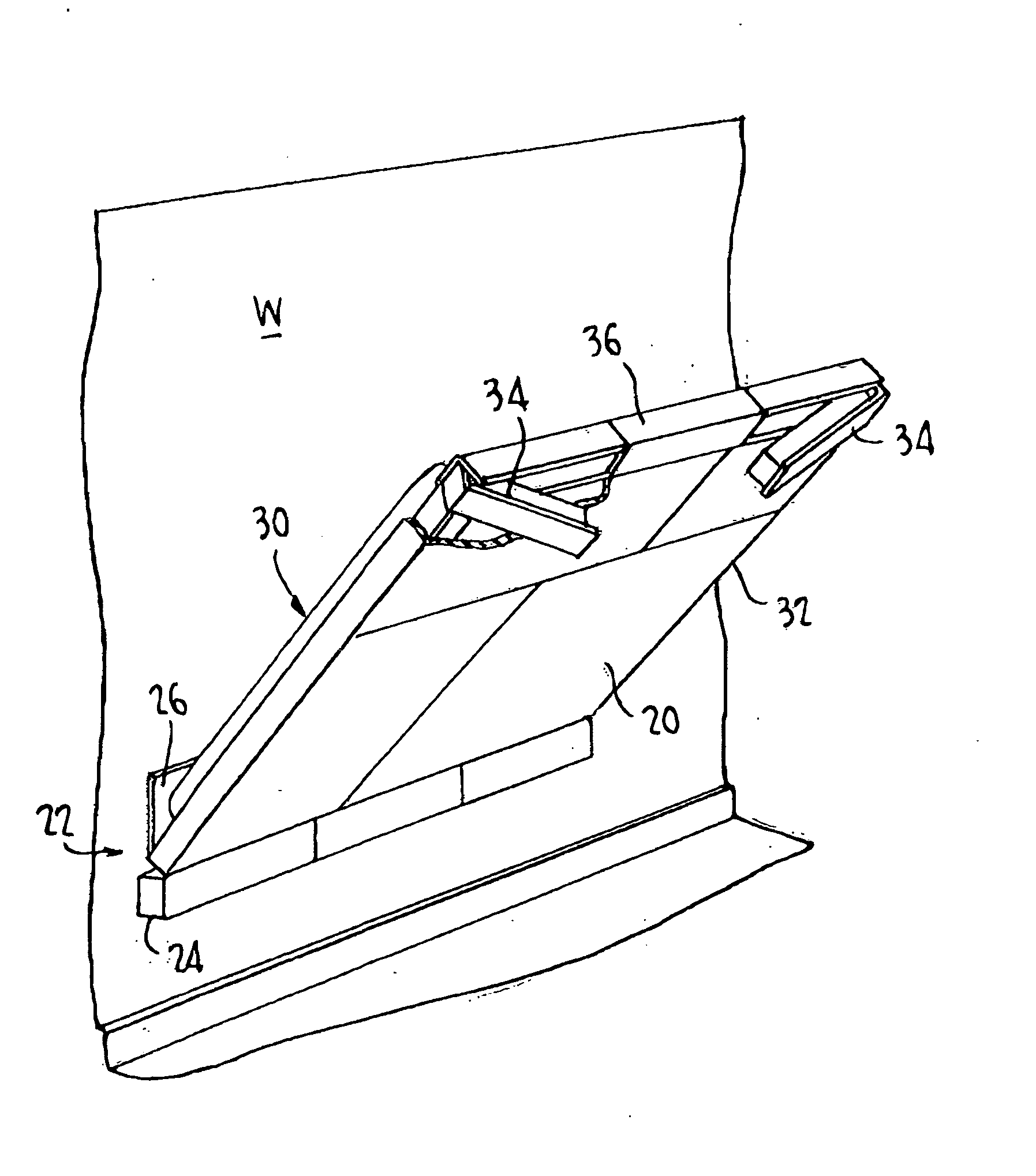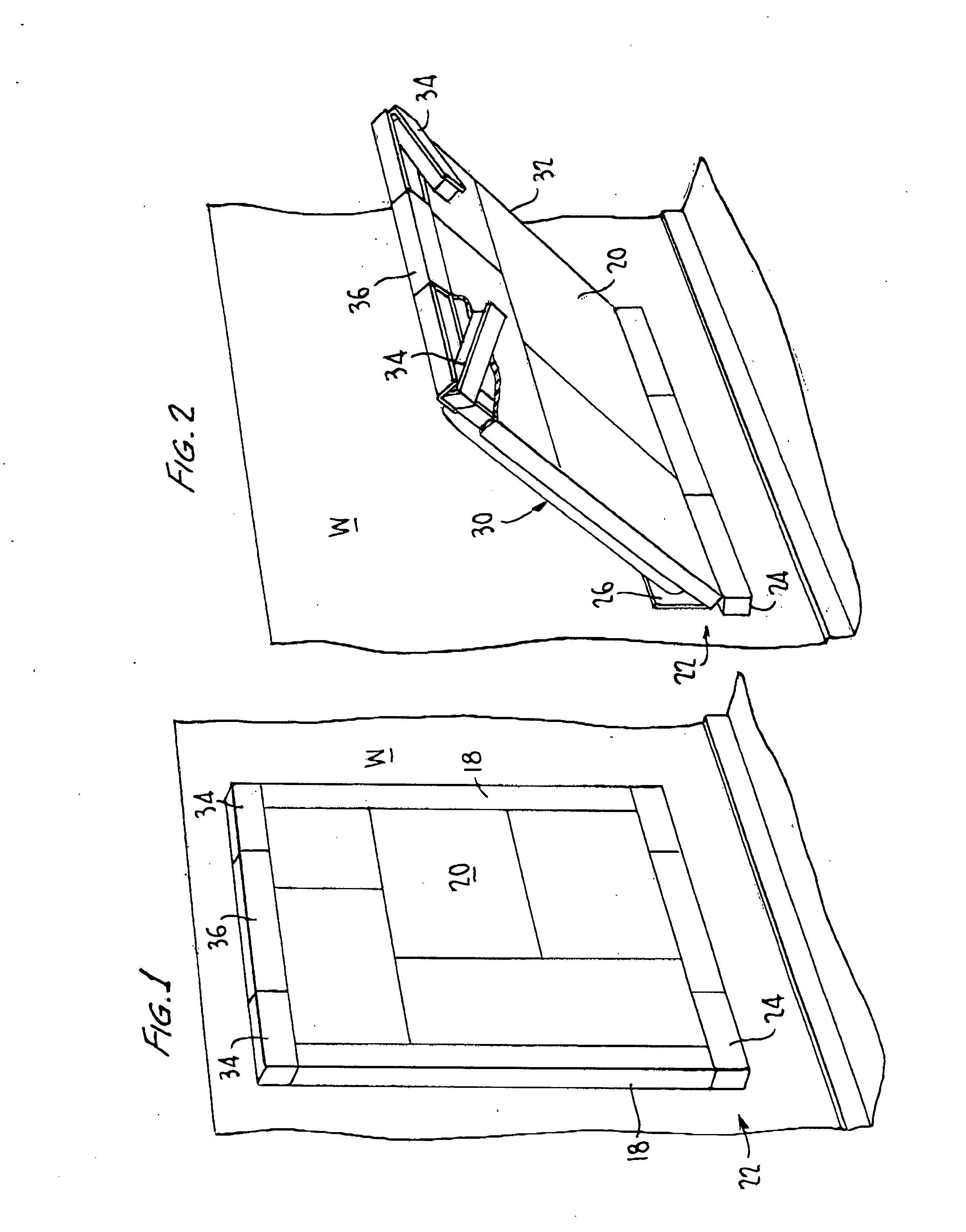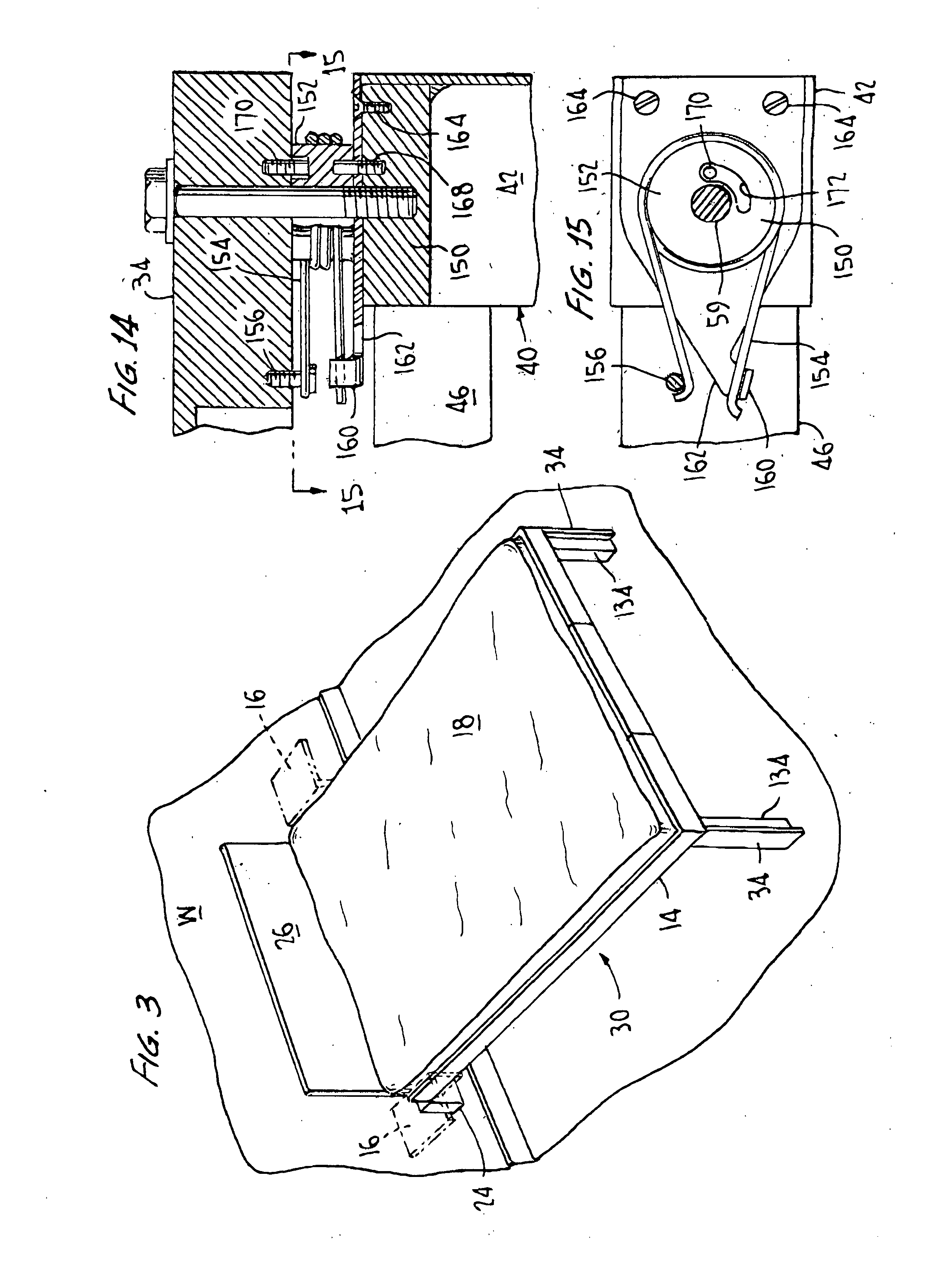Combined wall treatment and bed
- Summary
- Abstract
- Description
- Claims
- Application Information
AI Technical Summary
Benefits of technology
Problems solved by technology
Method used
Image
Examples
Embodiment Construction
[0056] Referring now to the drawings and in particular to FIGS. 1, 2, and 3, these show overall views of the combined wall treatment and bed of the invention (sometimes “the unit” hereafter) in several positions. Specifically, FIG. 1 shows the unit in its raised and stowed position, in which it appears as a wall treatment. In this embodiment, the outer face or façade 20 of the unit, which forms the underside of the unit when lowered for sleeping, is shown as a paneled face. All manner of flat surface treatments may be applied to façade 20, including, without limitation, wood paneling, artwork, fabrics, bulletin boards, black- or white-boards, and the like. It is also within the invention to provide means for readily replacing one form of surface treatment with another, to enable easy redecoration. FIG. 2 shows the combined wall treatment and bed of the present invention in an intermediate position, as it is being lowered to the sleep position or raised to the stowed position. FIG. 3...
PUM
 Login to View More
Login to View More Abstract
Description
Claims
Application Information
 Login to View More
Login to View More - R&D
- Intellectual Property
- Life Sciences
- Materials
- Tech Scout
- Unparalleled Data Quality
- Higher Quality Content
- 60% Fewer Hallucinations
Browse by: Latest US Patents, China's latest patents, Technical Efficacy Thesaurus, Application Domain, Technology Topic, Popular Technical Reports.
© 2025 PatSnap. All rights reserved.Legal|Privacy policy|Modern Slavery Act Transparency Statement|Sitemap|About US| Contact US: help@patsnap.com



